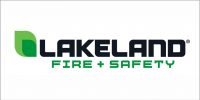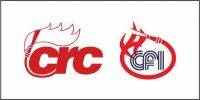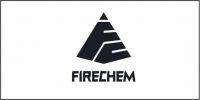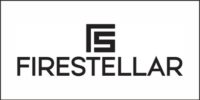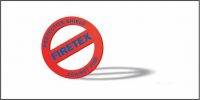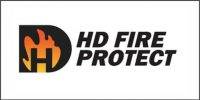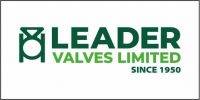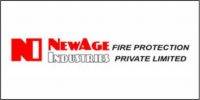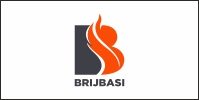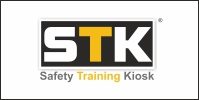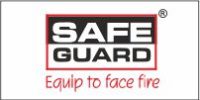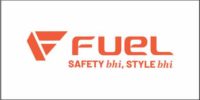 More and more, firefighters are encountering incidents well beyond the routine single-story residence fire. Beyond basic suppression and rescue skills, firefighters must be trained to recognize hazardous conditions that present potentially deadly situations. Combustible dust hazards have recently come under heavy scrutiny from the fire and safety industry.
More and more, firefighters are encountering incidents well beyond the routine single-story residence fire. Beyond basic suppression and rescue skills, firefighters must be trained to recognize hazardous conditions that present potentially deadly situations. Combustible dust hazards have recently come under heavy scrutiny from the fire and safety industry.
Combustible dust has been recognized as a defined hazard for many years. But a February 2008 explosion and fire at the Imperial Sugar refinery in Savannah, Georgia, left 14 dead and 38 others seriously injured. Massive accumulations of combustible sugar dust throughout the packaging building fueled the explosion. Although similar to others in the past, this event prompted a significant movement among regulatory agencies and standards organizations to inform and educate workers and managers in such environments about the dangers of combustible dusts.
Fire and rescue personnel must also have a working knowledge of combustible dust, or they may not recognize some very dangerous situations until it is too late. If you respond to a facility that generates combustible dust, you have a potential fire and explosion hazard that can cause serious burn injuries, fatalities, and severe property damage. Occupational Safety and Health Administration (OSHA) and Chemical Safety Board (CSB) statistics show that combustible dust incidents have killed scores of employees and injured hundreds over the past few decades. According to OSHA, since 1980, almost 150 workers have been killed and more than 850 injured in combustible dust explosions. Some of these include firefighters responding to facilities with operations that produce combustible dust. These numbers do not reflect the countless incidents where combustible dust may have contributed to a fire’s growth or presented a close call for firefighters.
Facilities with an operation that produces combustible dust are susceptible to two distinct hazards—fire and explosion. One hazard often leads to the other, but either may be the initial event. OSHA figures state that more than 80 percent of combustible dust incidents are fires. In many instances, these fires precede catastrophic explosions. In fact, a dust fire where an explosion has not yet occurred may present the most dangerous situation. This also means that firefighters responding to a combustible dust fire may in fact be putting themselves right in the middle of what is arguably one of the most dangerous situations in firefighting.
In many incidents, investigations revealed that employers and employees were unaware that a hazard even existed. If they don’t recognize the hazard, how will a responding firefighter?
Combustible Dust
Combustible dusts include fine particles, fibers, chips, chunks, or flakes that when suspended in air could potentially cause a fire or an explosion. Combustible dust hazards exist in a variety of industries—food processing, grain handling, plastics, forest products, furniture, textiles, pharmaceuticals, and metal fabrication, among countless others. Raw materials such as wood, flour, sugar, coal, and some metal dusts can present very dangerous conditions in the right situations.
Any combustible material, and even some materials typically considered noncombustible, can burn rapidly when divided into a small enough form. Generally speaking, the smaller the dust particle, the greater the potential hazard. The National Fire Protection Association (NFPA) recognizes that dust particles sized 420 microns or smaller cause the most concern. But for mixtures of varied particle sizes, research has shown that an explosive mixture exists if only two percent of the total dust concentration is sized 420 microns or smaller. For comparison, table salt and granulated sugar grains are generally between 150 and 850 microns in diameter. If such a dust is suspended in the right concentration within an enclosed area, a violent explosion can result. The force of such an explosion can destroy entire buildings and cause serious injury or death. Depending on the particle size and type, and the area of compartmentation during dispersal, a dust layer of only 1⁄32 inch deep (0.79 mm, about as thick as a paperclip) is enough to cause an explosion.
Anatomy of A Dust Explosion
Dust fires in their essence are no different from any other fire involving ordinary combustibles. Elementary fire behavior tells us that every dust fire involves the basic fire triangle: fuel, ignition source, and oxygen. However, two additional conditions are somewhat unique to combustible dust explosions. The first is the dispersion of the dust particles, and the second is the confinement of the dust cloud, such as in a vessel, a room, a building, or ductwork. These five conditions make up the dust explosion pentagon.
In many dust explosions, the initiating event may be relatively minor. Although this could involve a small primary fire or explosion, anything producing sufficient vibration to cause dust dispersal could create an explosive situation. A forklift striking a support column or an overhead beam may be enough to trigger a dust cloud, as can something as benign as cleaning an area with compressed air. Once dust is stirred up and suspended in the air, the only thing needed for a deflagration is for the right concentration to reach an ignition source. Once even a small explosion occurs, this often stirs enough additional fuel load to trigger secondary events that can rattle the building enough to shake dust free from all overhead areas and begin a chain-reaction explosion event that can potentially level a building.
Recognizing A Hazard
Properly assessing combustible dust dangers involves looking at every aspect from raw materials to the packaging of the final product. Performing regular walkthroughs at industrial and manufacturing facilities can help you determine your exposure to combustible dust. Machining, conveying, or otherwise manipulating a material is likely to produce dust in some form and volume. Dust may be produced through one particular process, such as grinding or sanding (photo 1), or it may result from material breakdown during the handling of a particular product, such as grain. In some cases, such as flour or sugar, the product itself is the combustible dust.
Pay particular attention to the fuel load suspended in overhead areas . Remember to think about all the places where dust may not be seen, including the tops of machinery, in or on the building structural members, and above drop ceilings. Remember, any “acoustic event” that produces enough vibration to dislodge this dust could result in a flash fire or an explosion. If a firefighter is in the area at that time, serious injury or death is likely. Keep in mind that the threshold level of dust used for OSHA citation purposes is 1⁄32 inch over 5 percent of the total surface area, which is supported by NFPA 654, Standard for the Prevention of Fire and Dust Explosions from the Manufacturing, Processing, and Handling of Combustible Particulate Solids.
As you look at the fuel load throughout a facility, also consider ignition sources and related control programs. Be sure to examine areas where dust is regularly in close contact with ignition sources. Assess the conditions of electrical disconnects, control rooms, and motors, as well as equipment involving bearings, chains, conveyors, and other moving parts that could produce a friction ignition. These are all areas where you will have to reasonably expect a response could be needed.









